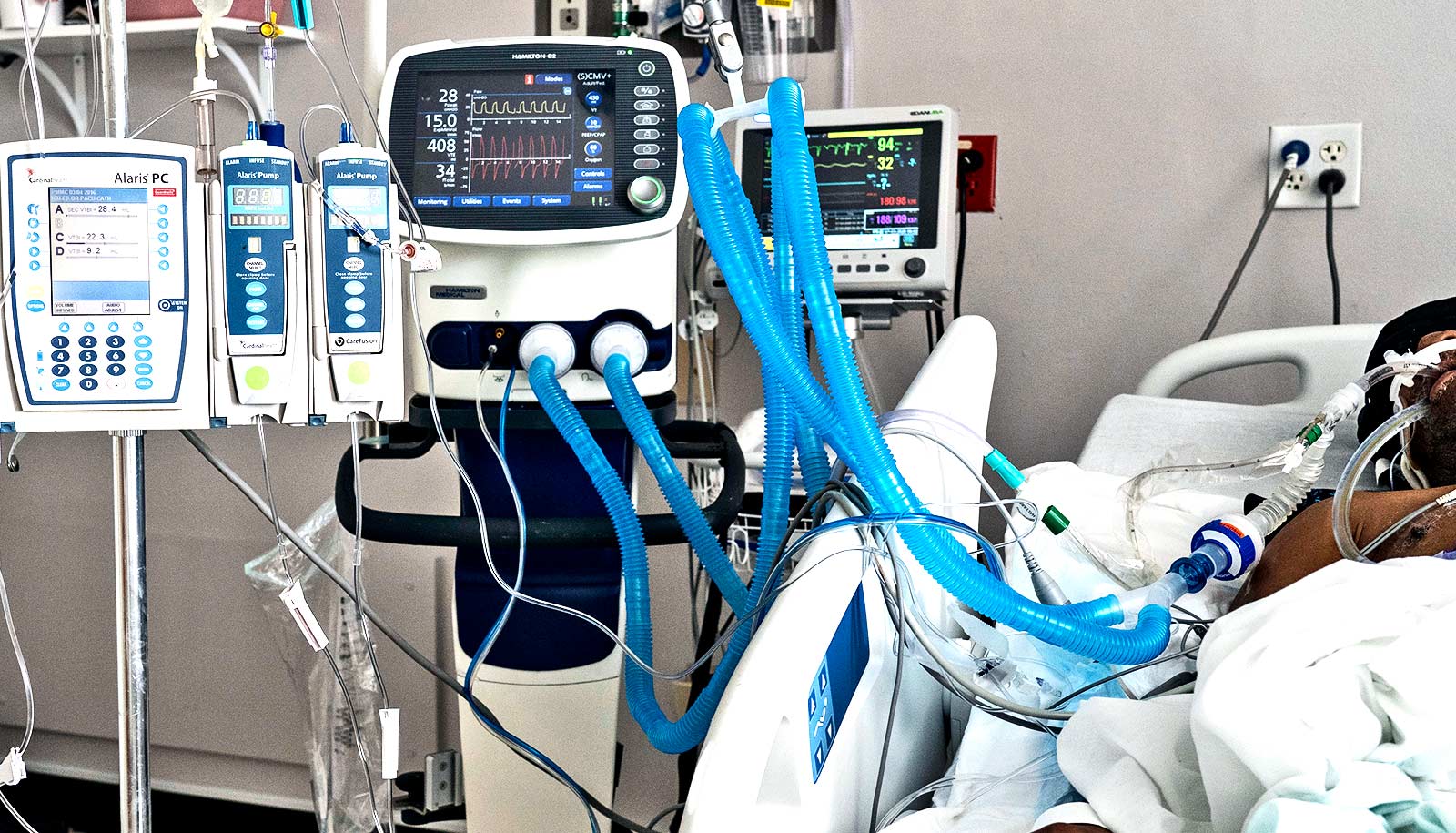
"There are boys who have been receiving the drug as part of clinical trials four to five years ago. I see them in clinic and parents send me videos, and their ability to get off the floor, jump, and run is not something you typically see in a seven-, eight-, or nine-year-old with Duchenne," says Emma Ciafaloni. (Credit: Getty Images )
Drug is first gene therapy for Duchenne muscular dystrophy
A new drug is the first gene therapy approved to treat debilitating and fatal Duchenne muscular dystrophy in four- and five-year-old boys.
Last week, the US Food and Drug Administration granted accelerated approval of a new drug to treat ambulatory pediatric patients aged four to five years with Duchenne muscular dystrophy.
It is the first gene therapy approved to treat this debilitating and fatal disease found almost exclusively in boys .
“…there is clearly something happening that is new and very promising.”
Emma Ciafaloni is a neuromuscular neurologist with the University of Rochester Medical Center (URMC) neurology department and Golisano Children’s Hospital, and director of the UR Medicine Duchenne Muscular Dystrophy Clinic, which treats boys with Duchenne muscular dystrophy (DMD) from across upstate New York.
Ciafaloni has been involved in DMD clinical research for decades and URMC was one of first three sites in the nation to start dosing patients in the phase 3 clinical trial for the new gene therapy . The study, called EMBARK, has since expanded to additional sites in North America, Europe, and Asia. Ciafaloni also served as chair of the independent Data Safety and Monitoring Board for the early phase clinical trials of the therapy. The new drug—delandistrogene moxeparvovec-rokl—is being developed by Sarepta Therapeutics and marketed under the name ELEVIDYS.
Here, Ciafaloni describes the drug, why the FDA chose to limit its use, and what this means for patients and their families:
The post Drug is first gene therapy for Duchenne muscular dystrophy appeared first on Futurity .
How does this new therapy work?
This gene transfer therapy uses an adeno-associated virus vector to deliver an engineered mini-dystrophin gene to the muscle cells in order to produce dystrophin, an important protein that helps hold muscle cells together. The drug is delivered through a one-time IV infusion.
Individuals with DMD are unable to produce enough dystrophin, causing musculoskeletal and heart cells to weaken and die over time. This is not the full-length dystrophin gene because that is too large to fit into a viral vector. The micro-dystrophin version of the gene used in this therapy was developed and engineered to be smaller than the full-length gene but maintain key elements to be functional.
The vector delivers the micro-dystrophin gene into the nucleus of muscles and heart cells and it starts producing the protein. It does not integrate with the nuclear DNA, which is important for safety, but rather sits in the nucleus and continues to produce mini-dystrophin.
Can you explain the FDA’s decision to limit approval to four- to five-year-olds?
More than 140 kids have been dosed so far in early phase clinical trial and the EMBARK phase 3 study has been fully enrolled with 120 patients since last September. The EMBARK study is ongoing and, when concluded, it will provide us pivotal information about the drug’s clinical efficacy. The company chose to ask the FDA to approve the drug on accelerated basis, which the agency has granted for other experimental DMD treatments, using increased micro-dystrophin production as a surrogate for clinical outcomes. The FDA agreed to grant accelerated approval, but chose to limit the drug’s use to boys four to five years of age for now, the group with more positive data available so far for improvement in clinical outcomes.
I know this limited approval is probably a disappointing one for many families. I share their sense of urgency. The longer that time passes, the smaller the effective therapeutic window becomes, and once lost nothing will bring muscle fibers back. With any experimental therapy for a rare, rapidly progressing debilitating, and fatal disease like DMD, you need to weigh the benefit and risk of experimental treatment versus waiting and safety has been largely very good for this drug so far. There is a definite risk in waiting, and that is irreversible loss of muscle and motor function.
Are you seeing clinical improvement in the boys enrolled in the study?
There are boys who have been receiving the drug as part of clinical trials four to five years ago. I see them in clinic and parents send me videos, and their ability to get off the floor, jump, and run is not something you typically see in a seven-, eight-, or nine-year-old with Duchenne. The full phase 3 data will speak eventually and help us understand how different patients respond and the best time to deliver gene therapy, but there is clearly something happening that is new and very promising.
Where does research in DMD go from here?
The approval of the first gene therapy for DMD represents a monumental advance and creates important momentum in the field of Duchenne and gene therapy in general. More work needs to be done, obviously, but you have to start somewhere and this approach is going to get better as we learn more, collect more human clinical data, and answer more important questions. There are other gene therapies under development for DMD, including trials for the very young and older kids.
So much credit needs to go to the Duchenne community for their passion and support. Families volunteered for these studies with unprecedented speed and the gene therapy trials are fully enrolled with no dropouts and fully committed participants. While there is disappointment, depending where they are in their journey with the disease, I think they will celebrate this approval, even if limited at first because it is just the beginning. A few of my patients are turning 6 in the next few weeks; that will be a difficult conversation for sure.
What does this mean to you personally?
I have been treating this disease for decades. As I was listening to the FDA advisory committee discuss the drug, I recalled the several Duchenne young adult patients of mine that have died over the past 12 months. If you have not had to diagnose kids at age three or four and stay with them until they die, then it is very hard to understand this disease and what it means to patients and their families. I feel fortunate to have that perspective and to witness this progress, I think that this is an important step in the right direction. The future of Duchenne is definitely getting brighter.
Share this article:
This article uses material from the Futurity article, and is licenced under a CC BY-SA 4.0 International License. Images, videos and audio are available under their respective licenses.
Related Articles:
New Jersey’s aid-in-dying law prompts ethical questions
July 24, 2019 • futurityCOVID-19 drug may cut death risk by 45% for severe cases
July 14, 2020 • futurityLinks/images:
- https://www.futurity.org/duchenne-muscular-dystrophy-steroids-2735352/
- https://www.futurity.org/muscular-dystrophy-boys-858722/
- https://www.fda.gov/news-events/press-announcements/fda-approves-first-gene-therapy-treatment-certain-patients-duchenne-muscular-dystrophy
- https://www.futurity.org/duchenne-muscular-dystrophy-elevidys-2937412-2/
- https://www.futurity.org


